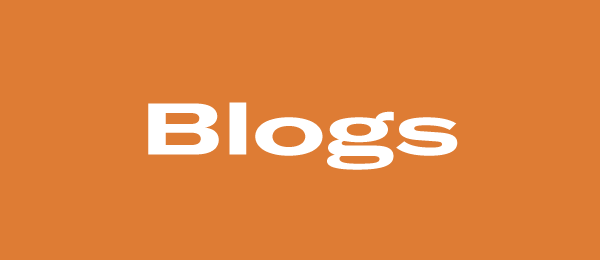
 |
 |
 |
 |
 |
 |
 |
 |
 |
 |
 |
April 2022 marks the official 21st anniversary of Sexual Assault Awareness Month — but did you know we can trace its history even longer?
Even before its official declaration, SAAM was about both awareness and prevention of sexual assault, harassment, and abuse. Looking at the history of the movement to end sexual violence, it’s clear why: It’s impossible to prevent an issue no one knows about, and it’s difficult to make people aware of a problem without providing a solution. The two work in tandem, and they always have. From the civil rights movement to the founding of the first rape crisis centers to national legislation and beyond, the roots of SAAM run deep.
Roots of the Movement
As long as there have been people who care about making the world a better place, there have been individuals advocating for sexual assault prevention. In the United States, movements for social change and equality began to gain traction in the 1940s and 50s with the civil rights era. Although open discussion of the realities of sexual assault and domestic violence were limited at these times, activists for equal rights began to challenge the status quo.
Efforts during this time were championed by Black women and women of color. Advocates like Rosa Parks worked at the intersections of race-based and gender-based violence (a framework that years later in 1989, advocate and professor Kimberlé Crenshaw would call “intersectionality”).
Wide social activism around the issue of sexual assault continued into the 1970s, bringing with it support for survivors and heightened awareness. The first rape crisis center was founded in San Francisco in 1971, the same city where the first U.S. Take Back the Night event was held seven years later.
The following decades mobilized survivors and advocates to call for legislation and funding that would support survivors, such as the Violence Against Women Act of 1993 (VAWA).
Monumental changes like VAWA demonstrated that national efforts promoting sexual violence prevention were needed. Even before SAAM was first nationally observed in 2001, advocates had been holding events, marches, and observances related to sexual violence during the month of April, sometimes during a week-long “Sexual Assault Awareness Week.”
In an effort to further coordinate awareness and prevention efforts, in 2000, the newly launched National Sexual Violence Resource Center and the Resource Sharing Project polled sexual violence coalitions. They asked organizations about their preferred color, symbol, and month for sexual assault awareness activities. The results showed that those in the movement preferred a teal ribbon as a symbol for sexual assault awareness, and SAAM as we know it was born.
NSVRC’s Role
For advocates at state coalitions, college campuses, or other community organizations, funding and time are often barriers to developing campaigns or resources related to awareness and prevention. That is why, each year, NSVRC coordinates a national SAAM campaign complete with the resources, graphics, and tools needed to hold an event or otherwise raise awareness.
Each year, NSVRC solicits feedback on SAAM, asking constituents about preferred topics to focus on. This feedback then informs the creation of the theme, which spans from the slogan to the design elements to the type of resources created. Once those resources and supplies are created, NSVRC shares them with a wide range of state, territory, and local organizations working to end sexual violence as well as individuals who want to make change in their communities.
Awareness & Prevention
In the early 2000s, the primary goal of SAAM was awareness — both raising visibility of the teal ribbon and the meaning behind it. By the mid-2000s, SAAM incorporated prevention more heavily, focusing on areas such as communities, workplaces, and college campuses. These campaigns discussed ways that individuals and communities can stop sexual assault before it happens by changing behaviors and promoting respect.
These two goals of awareness and prevention carried over into the 2010s, laying the groundwork for the SAAM that we see today. While each campaign has a different theme, they all share same common goals: to raise visibility about sexual assault and share how it can be prevented, whether that’s through education about healthy sexuality, consent, or bystander intervention.
Expanding Audiences
In more recent years, SAAM has focused on bringing in audiences beyond advocates — those who may not realize they play an important role in preventing sexual violence. Recent resources have focused on how people like parents, faith leaders, and coaches can become agents of change, while sharing the practical things each of us can do to prevent sexual assault.
SAAM has also branched out to Spanish-speaking audiences as well, with campaigns in recent years that include Spanish content. Whether that’s resources that cover the same information from the English campaign in Spanish, a different theme and style of resources, or a combination of the two, SAAM en español has helped even more communities get involved in prevention.
Prevention in a Virtual World
In April 2020, the widespread impact of the COVID-19 pandemic led us to implement the first-ever virtual SAAM campaign, applying concepts about consent to a digital context. This focus on prevention in online spaces continued in 2021 and 2022, reflecting the world’s growing dependence on technology to connect.
The Future of SAAM
The history of SAAM has shown us that, no matter what, those who want to end sexual assault and abuse will always find ways to advocate for awareness and prevention. Looking forward, we can be sure that SAAM will continue to grow and adapt, reaching even more audiences with the message that a world free of sexual assault and abuse is possible.
